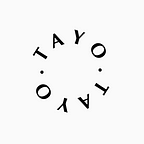A Work in Progress: Discussing the Waste Management System in the Philippines
Analyzing the effectiveness of the Philippine policies regarding waste management and how reforming them could benefit the country
Article by Lauren Garcia
The Philippines is choking on the waste created by Filipinos. Landfills and places outside of waste disposal areas and recycling compounds like the streets of Manila and the ocean floors are piling up with trash. The country is said only to have 40–85% of its waste collected nationwide, implying that 15–60% is littered. The uncollected garbage ends up being burned or dumped anywhere onto open areas, adding to the polluted air shed and water body, and global warming in the country. From the 10.6 million tons of solid waste recorded in 2012, the waste generation rate of the Philippines is only expected to increase to a doubling rate by 2025.
Some action has been taken on to address the issue. Boracay, one of the most popular tourist destinations of the country, has re-opened in October 2018 after an extensive six-month clean-up. The island has improved its sewage system, handled illegal establishments, revamped its policies, and has set a limit as to how many visitors can be accommodated. Started in 2019, Manila Bay has its rehabilitation, and because it resides with a busy and polluted city, it will take years for it to be completely free from dirt. Only having solid waste removed from the area, the Manila Bay rehabilitation still needs to disinfect the bay from bacteria and manage the establishments’, that surround the bay, sewage, and waste management systems.
The Philippines supposedly follows the Republic Act 9003 (RA 9003)-Ecological Solid Waste Management Act of 2000. RA 9003 provides the required policy framework to the Local Government Units (LGUs) to achieve 25% waste reduction target through establishing an integrated solid waste management plan based on the 3Rs (reduce, reuse and recycling). LGU’s are expected to use the given tax and duty exemptions from the government to run recycling, composting, and waste management programs. One of RA 9003’s regulations is that throwing trash without segregation is illegal. All LGUs are required to collect waste only when it’s sorted. It is also unlawful to litter in public areas, conduct open burning of solid waste, and permit the collection of non-segregated waste.
Despite such, litter and waste are prevalent and very few to none cases of people being charged for litter is heard. Since enforcement laws are not as strict as they should be, it is only natural for people to tend towards ignoring the rules. One can easily throw their trash anywhere and say, “I’ll leave this [trash] here. It will be fine.” However, Filipinos don’t realize that millions of people say and do the same every day.
The Philippines can still improve its waste management by not only strictly enforcing its current rules but by adding more policies for citizens to follow. Prominently, schools need to create an environment where youth can develop habits. This means more than merely advocating CLAYGO (Clean as you go), but disciplining students in doing so. Japan, a model of cleanliness, requires its students to participate in cleaning the school’s classrooms and facilities as a part of their curriculum. Japanese teachers allot time to teach students, as old as six years old, how to use cleaning equipment such as a broom and dustpan. Whether it be in school or an office, with the amount of trash currently present, people can’t always rely on the city cleaners and janitors to clean up our mess. Instead, individuals must make smart choices, learn, and choose sustainability to maintain cleanliness.
Filipinos can’t just throw trash in any bin they see. More trash bins need to be available for people, especially in densely populated areas like Manila. In Sweden, there’s a rule that states that recycling stations are no more than 300 meters from any residential area. Outside of biodegradables, non-biodegradables, and recyclables lie more categories that trash can be segregated too. PET bottles, bottle caps, sachets for personal care, sachets for cooking purposes, and much more can be separated and not all be piled up into a single landfill.
New policies can be added, such as a ban on the use of Styrofoam or putting fees on single-use plastics in establishments. There are many coffee cups and food containers in places like cafes and restaurants that use Styrofoam. Polystyrene (Styrofoam) is a type of single-use material which means that it will be around for decades after one use. It only breaks down into smaller particles, therefore, polluting the environment, hurting the wildlife, and impacting the economy. Getting rid of or putting a fee on the material would benefit the pollution problem and help people think about the issue more.
The suggested policies are certainly not going to solve the waste management solution all at once. However, starting with small steps and small changes builds momentum and can eventually reach sustainable goals. Sustainability can be achieved. It just needs people. People who are aware of the issues. People who express their concerns. People who will fight for the environment so that in return, the government will be motivated to take serious action.
